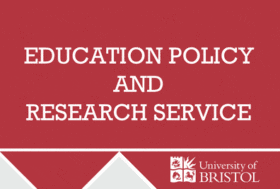Responding to young people who disclose self-harm


This article is a research summary of the following source:
Pierret ACS, Anderson JK, Ford TJ et al. (2020) Review: Education and training interventions, and support tools for school staff to adequately respond to young people who disclose self-harm – a systematic literature review of effectiveness, feasibility and acceptability. Child and Adolescent Mental Health 27(2): 161–172.
Introduction
Schools are well positioned to identify and intervene with students who self-harm, with school staff frequently the first to uncover concerning behaviours (Berger et al., 2014a).
Self-harm is defined as intentional injury of one’s body which may or may not be associated with suicidal intent (Nock and Favazza, 2009). There is a significantly higher risk of adverse non-fatal and fatal outcomes in young people who self-harm (Hawton et al., 2012), including substance misuse disorder, future self-harm and mental illness (Mars et al., 2014; Morgan et al., 2017).
Concerns around confidentiality and a feared negative reaction mean that students are often reluctant to disclose self-harm to staff (Best, 2005, 2006; Evans and Hurrell, 2016; Klineberg et al., 2013). Furthermore, research suggests that school staff lack knowledge and confidence to address self-harm, often reacting negatively to disclosure with anger, shock, panic and repulsion (Berger et al., 2014b; Best, 2005, 2006).
There is a discernible need for preventative interventions in schools (Berger et al., 2014a; Heath, Toste and Beettam, 2006) and training for school staff around self-harm (Berger et al., 2014a, 2014b; Best, 2006; Evans et al., 2019; Roberts-Dobie and Donatelle, 2007). However, there is a lack of rigorously evaluated programmes.
The aim of this study was to investigate the effectiveness, feasibility and acceptability of training interventions and support tools intended to equip school staff with skills and knowledge to adequately respond to students’ disclosure of self-harm.
What is the research underpinning it?
A systematic literature review was conducted. Of the 848 studies that were screened, only eight studies met the inclusionAn approach where a school aims to ensure that all children ... More criteria and were included in the review. Six of these evaluated interventions and two evaluated tools, with a total of 1,058 participants. The tools were a self-harm website for educators and a self-harm policy in secondary schools. The interventions included professional development workshops and courses on recognising and responding to self-harm for school staff.
It was not possible to conduct a meta-analysisA quantitative study design used to systematically assess th... More due to the poor quality and heterogeneity of the studies. A narrative approach was therefore used to describe the findings. Further thematic synthesis was used to analyse the qualitative data contained in five of these studies. Half of the studies were double-screened at the title/abstract and full-text screening stages, with a high inter-rater agreement. The majority of studies were carried out in secondary schools, so it is unclear if the findings are transferrable to other settings.
Findings suggest that all eight interventions/tools were highly effective in terms of an increase in knowledge, skills and confidence of staff in responding to self-harming youth. High levels of satisfaction and perceived benefit were reported by staff, though data on feasibility of the interventions was lacking.
Due to a lack of follow-up data and poor retention, it is difficult to draw conclusions about the efficacy of the interventions and tools over prolonged periods of time. There was also a paucity of data relating to student outcomes and actual changes in staff practice in schools.
Findings from the qualitative data suggest that it is important to equip school staff to respond to students who self-harm. Staff generally reported a lack of knowledge, understanding, confidence and experience in dealing with self-harm and a lack of clear protocols to follow. Furthermore, whilst interventions and tools were highly valued by staff, they need tailoring to reflect staff backgrounds and experience and school contexts and policies. Finally, the importance of a whole school approach, in which responsibility is shared between all staff, was identified.
Impact on practice
This study highlights that more evidence is still needed to understand the effectiveness, acceptability and feasibility of interventions/tools for school staff addressing self-harm. When choosing to implement a programme in your school, it is also important to consider what follow-up training is provided to help staff consolidate and sustain acquired knowledge and skills.
Key takeaways
- Schools are well positioned to identify and intervene with students who self-harm
- School staff need to be equipped to respond to students who self-harm
- Interventions and tools need tailoring to reflect staff backgrounds and experience, and school contexts and policies
- A whole-school approach, in which responsibility is shared between all staff, is important
- More evidence is still needed to understand the effectiveness, acceptability and feasibility of interventions/tools for school staff addressing self-harm.
Want to know more?
Self-harm in primary-aged school children | BERA
Responding To Self-Harm In Young People | YoungMinds
NICE guidelines for self-harm: a new school of thought – ACAMH
References
- Berger E, Hasking P and Reupert A (2014a) Response and training needs of school staff towards student self-injury. Teaching and Teacher Education 44: 25–34.
- Berger E, Hasking P and Reupert A (2014b) ‘“We’re Working in the Dark Here”: Education needs of teachers and school staff regarding student self-injury’: Erratum. School Mental Health: A Multidisciplinary Research and Practice Journal 6: 295.
- Best R (2005) An educational response to deliberate self-harm: Training, support and school-agency links. Journal of Social Work Practice 19: 275–287.
- Best R (2006) Deliberate self-harm in adolescence: A challenge for schools. British Journal of Guidance and Counselling 34: 161–175.
- Evans R and Hurrell C (2016) The role of schools in children and young people’s self-harm and suicide: Systematic review and meta-ethnography of qualitative research. BMC Public Health 16: 1–3.
- Evans R, Parker R, Russell AE et al. (2019) Adolescent self-harm prevention and intervention in secondary schools: A survey of staff in England and Wales. Child and Adolescent Mental Health 24: 230–238.
- Hawton K, Saunders KEA and O’Connor RC (2012) Self-harm and suicide in adolescents. Lancet 379: 2373–2382.
- Heath NL, Toste JR and Beettam EL (2006) I Am Not WellEquipped’: High school teachers’ perceptions of self-injury. Canadian Journal of School Psychology 21: 73–92.
- Klineberg E, Kelly MJ, Stansfeld SA et al. (2013) How do adolescents talk about self-harm: A qualitative study of disclosure in an ethnically diverse urban population in England. BMC Public Health 13: 572.
- Mars B, Heron J, Crane C et al. (2014) Clinical and social outcomes of adolescent self harm: Population based birth cohort study. BMJ Clinical Research 349: g5954.
- Morgan C, Webb RT, Carr MJ et al. (2017) Incidence, clinical management, and mortality risk following self harm among children and adolescents: Cohort Study in Primary Care. BMJ Clinical Research 359: j4351
- Nock MK and Favazza AR (2009) Nonsuicidal self-injury: Definition and classification. In: Nock MK (ed) Understanding nonsuicidal self-injury: Origins, assessment, and treatment. Washington, DC: American Psychological Association, pp. 9–18.
- Roberts-Dobie S and Donatelle RJ (2007) School counselors and student self-injury. The Journal of School Health 77: 257–264.









